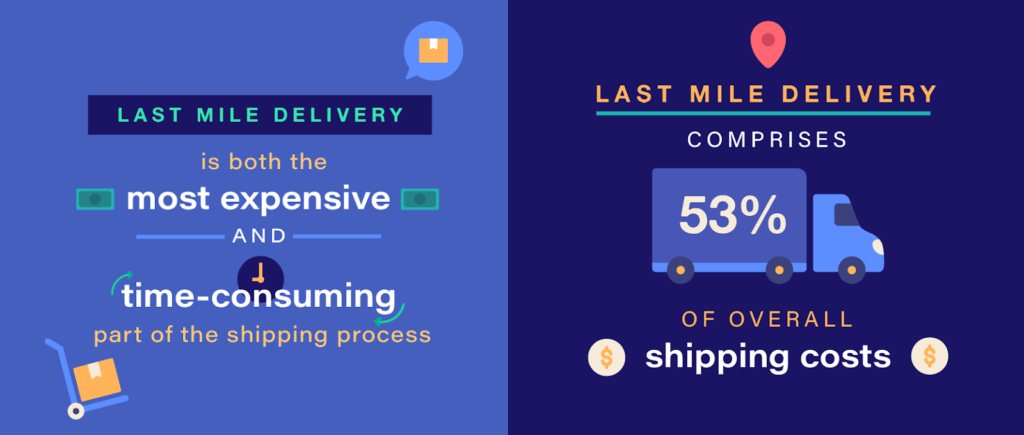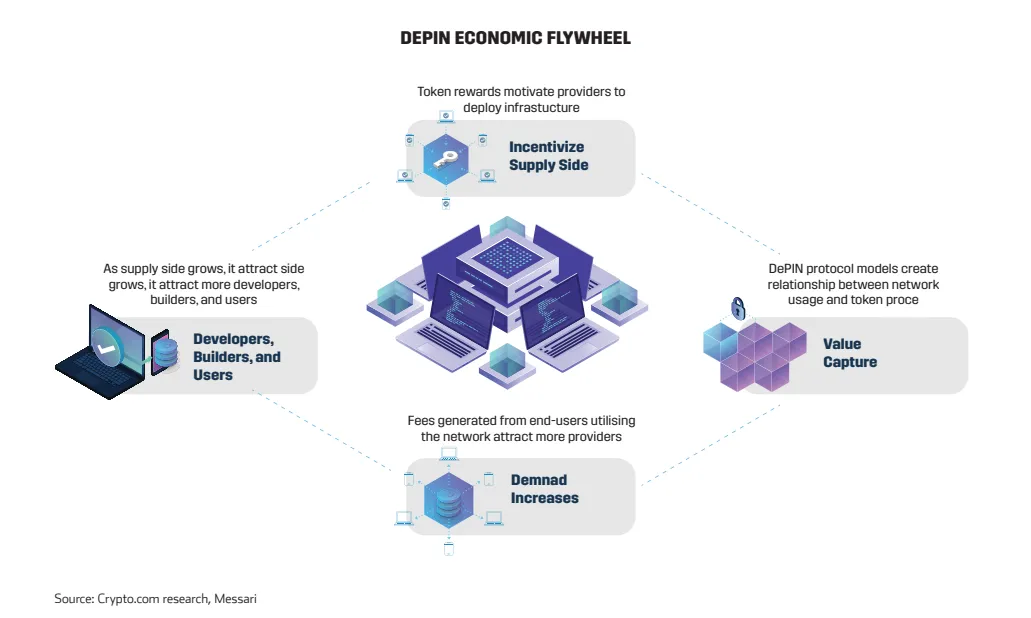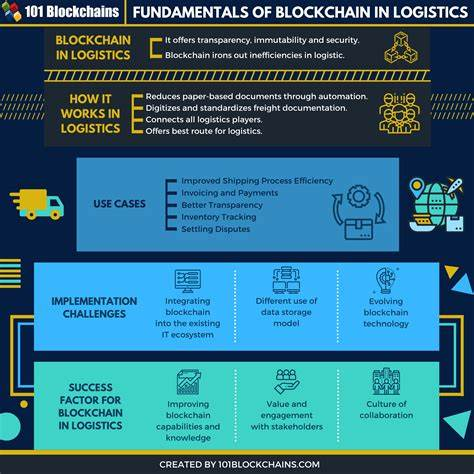Introduction: A Paradigm Shift in Urban Delivery
Urban delivery markets are under immense cost pressure and facing unprecedented demand. As e-commerce booms and customer expectations for fast shipping soar, traditional logistics models struggle to keep up. Last-mile delivery, the final leg of getting goods to customers, has become the costliest and most inefficient segment of the supply chain. In fact, between 2018 and 2023, last-mile costs ballooned from 41% to 53% of total shipping expenses. This trend highlights an urgent need for innovation.
Enter DePIN logistics solutions, a new breed of decentralized, blockchain-based networks poised to transform urban deliveries. These solutions leverage decentralized infrastructure networks powered by blockchain technology to replace costly centralized logistics systems with community-driven, efficient alternatives.

Last‑mile delivery is both the most expensive and time‑consuming stage of the shipping process, accounting for 53% of total shipping costs (Source: OptimoRoute)
In this blog, we’ll explore how blockchain-powered delivery networks are emerging as a game changer, what decentralized infrastructure networks (DePIN) mean for logistics, and real-world examples of tokenized urban logistics in action.
The Problem with Centralized Logistics in Cities
Traditional urban logistics are dominated by centralized players: large courier companies, food delivery apps, and ride-hailing platforms that act as intermediaries between senders, couriers, and recipients. While they provide coordination, they also charge high fees and accumulate power, often at the expense of efficiency and fair value distribution. These rent-seeking models lead to suboptimal outcomes: couriers earn less, consumers pay more, and the system is slow to adapt to local needs or surges in demand.
Moreover, centralized logistics infrastructures are expensive to scale. Companies must invest in warehouses, fleets of vehicles, and IT systems, passing those costs onto users. In congested urban environments, one traffic jam or failed delivery attempt can cascade into significant delays and added costs. Clearly, the current model is economically strained and ripe for disruption.
What Are DePIN Logistics Solutions?
DePIN stands for Decentralized Physical Infrastructure Networks. In the context of logistics, DePIN refers to blockchain-based networks that incentivize individuals and communities to provide physical services or infrastructure – such as delivery vehicles, storage space, or last-mile delivery labor, in a decentralized way. Instead of a single company owning all assets and dictating terms, a DePIN logistics network is an open marketplace where anyone can contribute resources or services and be rewarded directly. It’s a paradigm shift in how delivery markets function. By leveraging local participants and their assets, these networks fill incentive gaps that centralized systems miss, tapping into local knowledge and resources to improve service coverage and efficiency.

DePIN Economic Flywheel, token incentives drive infrastructure deployment, which boosts supply, attracts developers and users, increases demand, and captures value through network usage and token price (Source: Crypto.com Research, Messari)
In simpler terms, a DePIN logistics solution is a community-driven delivery network coordinated by blockchain. Participants (individual couriers, micro-warehouse owners, even everyday citizens) use a decentralized app to offer delivery services or infrastructure. The blockchain acts as a transparent ledger to match demand with supply, record delivery transactions, and automate payments via smart contracts.
The main keyword “DePIN logistics solutions” encompasses this whole ecosystem of decentralized, token-incentivized delivery services aiming to replace centralized logistics in cities.
Benefits of Decentralized Infrastructure Networks in Delivery
Adopting decentralized infrastructure networks for urban logistics brings several compelling benefits:
- Cost Efficiency: By cutting out the costly middlemen, DePIN networks reduce fees. Participants earn tokens or fees directly for their services, often at a lower cost to end-users. With last-mile delivery costs soaring in traditional models, a decentralized approach can significantly lower operational expenses.
- Scalability through Community: Instead of one company investing in all infrastructure, the network grows organically as more individuals contribute. This crowdsourced scaling resembles how Helium grew a global IoT network via user-deployed hotspots. In deliveries, this means more couriers, smart lockers, or drones can join the network as needed, rapidly expanding coverage without huge capital investments.

Blockchain in logistics infographic (Source: 101Blockchains – Benefits of Blockchain in Logistics Industry)
- Local Optimization: Decentralized networks leverage local knowledge. Residents and independent couriers often know the quickest routes, peak traffic patterns, and community specifics better than any central planner. By empowering local participants, routes and services can be optimized for each neighborhood, improving speed and reliability. These community-driven contributions fill gaps that large centralized players often overlook or ignore.
- Transparency and Trust: Blockchain-powered delivery platforms provide an immutable record of every parcel’s journey. All stakeholders – senders, couriers, receivers – can track shipments in real-time on a shared ledger, ensuring trust through transparency. For instance, blockchain can log handoffs or locker drop-offs securely, preventing disputes. No single entity can secretly manipulate data, which is crucial for high-value goods or sensitive supplies.
- Resilience and Innovation: A decentralized system has no single point of failure. If one node (courier or facility) goes down, the network reroutes through others. This resilience is valuable in urban environments prone to disruptions. Moreover, open networks encourage innovation, as developers can build on top of them (new routing algorithms, delivery drones integrations, etc.) without needing permission from a gatekeeper.
How Blockchain-Powered Delivery Networks Work
At the heart of these DePIN logistics solutions is blockchain technology, which coordinates and secures the network. Here’s how a blockchain-powered delivery network typically works:
1. Tokenized Incentives: The network runs on a crypto token that aligns everyone’s incentives. When a delivery is completed, the protocol may issue a token reward for the transaction essentially creating a “block reward” when a buyer (customer) and a producer (courier or service provider) successfully transact.
This token economy ensures that those who contribute (by delivering packages, hosting a parcel locker, providing vehicle capacity, etc.) are rewarded proportionally. It also means early adopters who help grow the network earn tokens that could appreciate in value, motivating rapid participation.
2. Smart Contracts & Automation: Smart contracts handle the workflows from order matching to payment escrow. For example, when a customer places a delivery request, a smart contract might lock the payment (or tokens) in an escrow. Once the package is delivered and both parties confirm (or an IoT sensor verifies drop-off), the contract releases payment to the courier. This trustless escrow eliminates the need for a central delivery company to manage payments. It also can enforce penalties or rewards automatically (e.g., timely delivery bonuses).
In advanced networks, multi-signature escrow contracts hold funds until both buyer and deliverer attest to completion, ensuring payments are only released upon service completion. This reduces fraud and builds trust without a middleman.

IoT devices from various sectors send transactions to a decentralized blockchain network, where blockchain and delegated nodes validate and secure the data. (Source: ResearchGate)
3. Proof of Delivery & Security: A key challenge is verifying that a real-world delivery happened as claimed (the “oracle problem”). DePIN logistics networks tackle this with innovative tech: for instance, zero-knowledge proofs of location, one-time codes, and randomized assignments of couriers are used to create robust proofs-of-delivery. In practice, a customer might receive a one-time PIN to give the courier at drop-off, which the courier inputs to confirm the delivery on-chain. Some protocols use location stamps or IoT sensors that log data to the blockchain.
By combining approaches (KYC for participants, cryptographic location proofs, random courier assignment to prevent collusion), decentralized systems can confidently verify deliveries without relying on a single company’s verification system. This ensures security and trustworthiness on par with, or even exceeding, traditional methods.
4. Decentralized Governance: Many DePIN networks are governed by their user community through a DAO (Decentralized Autonomous Organization). Token holders can vote on fee structures, dispute resolution rules, or network upgrades. This democratizes decision-making, allowing the people who rely on the logistics network (businesses, couriers, consumers) to have a say in its evolution – a stark contrast to corporate logistics where decisions are top-down.
Governance tokens or reputational systems also help keep actors honest (e.g., couriers with consistently good service build reputation on-chain, which is visible to others).
5. Integration of IoT and Data: Most blockchain-powered delivery solutions integrate IoT devices for tracking and data collection. GPS trackers, RFID tags, or smart locks on delivery boxes feed data to the blockchain in real time. A great example is the Helium network’s approach to tracking shipments: small IoT sensors on packages can send location pings through a community-run wireless network at a fraction of the cost of cellular data. Helium’s decentralized wireless infrastructure allows a simple sticker tracker on a parcel to stay connected across a city without relying on any single telecom provider.
This kind of IoT integration means real-time visibility for all parties, automated by smart contracts that can react if a package goes off-route or is delayed.
Conclusion
Urban logistics is shifting. Traditional systems are struggling, while decentralized, blockchain-powered networks are stepping up with lower costs, greater transparency, and real community incentives. DePIN solutions open the door to efficient, open marketplaces where value flows to those who do the work.
For innovators, this is the next frontier. Now is the time to explore, invest, and build.
At Twendee, we help businesses unlock the power of blockchain in logistics. Whether you’re optimizing last-mile delivery or building a DePIN platform from scratch, we’re here to bring your ideas to life.
👉 Connect with us on LinkedIn or X to explore how Twendee can support your transformation: Twitter & LinkedIn PageRead latest blog: Top 8 Ways AI Is Transforming Healthcare Operations and Diagnosis





